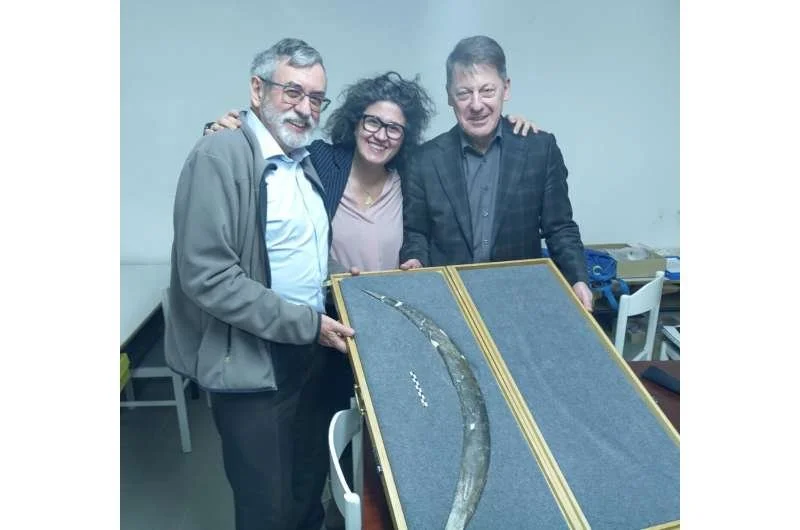A remarkable archaeological find has surfaced in Poland’s Kraków-Częstochowa Upland, where metal detectorists from the INVENTUM Association have uncovered a 2,000-year-old Roman sword. The discovery, made by Rafal Proszowski and Mariusz Lampa while searching for World War II relics, highlights the region’s deep historical layers. Upon notifying local authorities, the sword was transferred to the Częstochowa Museum for examination and preservation.
A Rare Glimpse into Roman Warfare
Experts have identified the sword as a spatha, a long, straight weapon initially used by Celtic auxiliaries serving in the Roman army. By the 3rd century AD, the spatha had evolved into a standard infantry weapon. A modified version, designed for cavalry use, featured a rounded tip to prevent accidental injuries to horses and riders.
The sword was found in three fragments, indicating it may have been a ceremonial burial offering. Researchers suggest it was part of a Prezor Culture funeral practice, where high-status individuals were often buried with valuable Roman imports. In many cases, the deceased were cremated, with their remains placed in urns alongside prestigious artifacts.
The Prezor Culture and Its Decline
The Prezor Culture, an amalgamation of localized groups often linked to the Vandals, thrived in areas influenced by the Roman Empire. However, its decline in the late 5th century coincided with the Hun invasions and the broader collapse of Roman influence. The resulting societal disruptions and the breakdown of trade networks may have further contributed to the culture’s disappearance.
Additional Medieval Discoveries
Alongside the Roman sword, the detectorists uncovered an axe and three well-preserved spurs from the late Middle Ages. These artifacts have also been sent to the Częstochowa Museum for detailed study.
“This discovery sheds new light on the history of the region and confirms that the Northern Jurassic still holds many secrets,” stated the INVENTUM Association. As research continues, experts hope to uncover more about the sword’s origins and the historical significance of the site.
The find underscores how much history remains hidden beneath the surface, waiting to be revealed by those who seek it.







